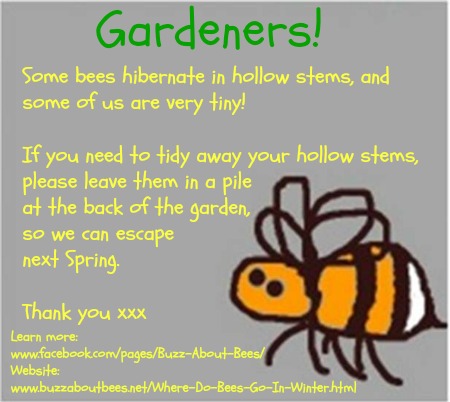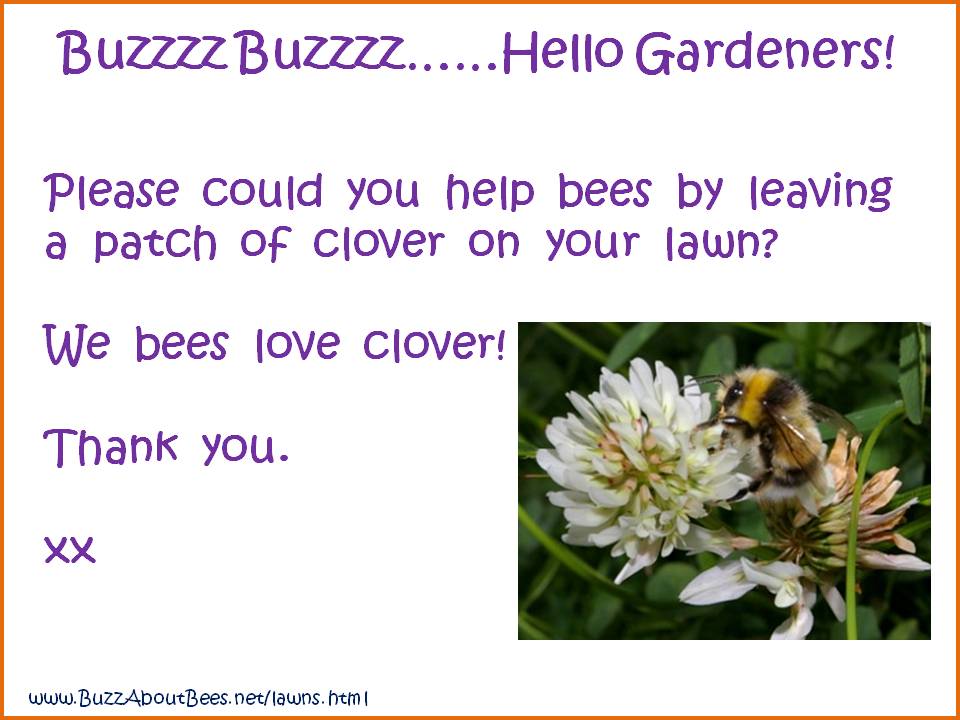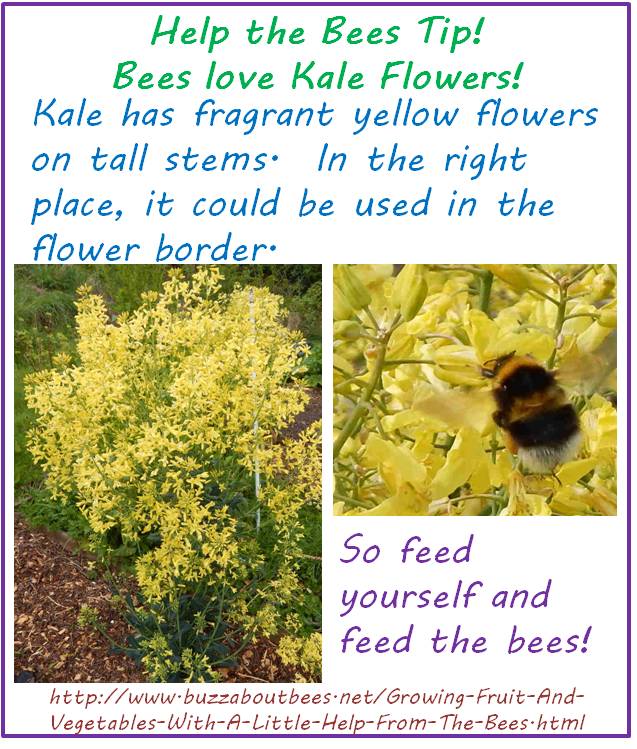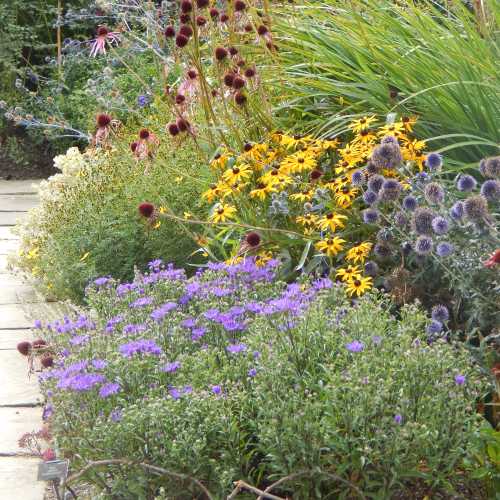20 Simple Gardening Tips To Help Bees
No matter the size of your garden, help bees and pollinators and get your garden buzzing with these simple gardening tips to help bees.
20 Simple Gardening Tips To Help Bees
There are more things you can do than simply plant flower, so please read on.......
1. Install a solitary bee house to help solitary bees.
Either make one yourself from a block of wood with holes drilled into it, or use hollow canes. If you don’t have time, there are ready-made bee houses widely available, and they also make lovely gifts for gardeners and nature lovers. Mason bees and leafcutter bees may well take up residence and provide hours of entertainment.
2. Leave a patch of bare earth
Some ground
nesting solitary bees may use it for nests, or mason bees may gather the mud
for constructing their egg cells. If you
discover a nest of ground nesting bees, mark the spot if necessary, as a
reminder to leave the area undisturbed.
3. Include a wide variety of flower shapes
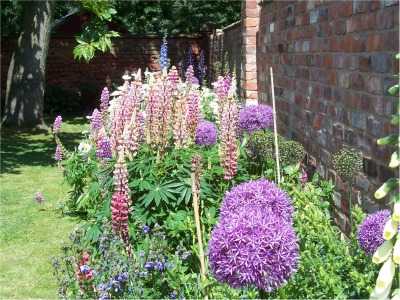
Ensure you include a wide variety of flower
shapes in your garden to suit a variety of bee species with different tongue
lengths, body shape and foraging preferences.
4. Select plants high in nectar & pollen
Both nectar and pollen are vital for bees. Select plants which are high in nectar, pollen or both. Highly cultivated, ornamental plants such as begonias, are often of very limited value.
Simple, open flowers are often more attractive for bees – take a look at these
roses, which are a magnet for bees in comparison with heavily cultivated types.
5. Provide flowers throughout the year
Plan your garden to provide flowers for as long a season as possible – some bees may emerge early in the year, others may emerge late.
6. Provide a source of water for bees
This gardening tip to help bees is often forgotten about. Include a source of water for bees for use back
at their nests. A small pond will
suffice – or even a shallow bird bath with stone inside to ensure bees can make
their way to the water’s edge safely.
7. Leave the dead plant stems alone
One of my top gardening tips to help bees! Don’t clip back and burn stems from shrubs, plants and bushes – the hollow stems might be used by bees for overwintering (and other helpful invertebrates).
Instead, cut them back in spring if you have to, and leave them (un-burned)
in a pile at the back of the garden.
8. Cut out the pesticides
Don’t use pesticides in your garden. It's not rocket science: insecticides are for killing insects – and of
course, bees are insects.
9. Include wildflowers
See: Which wildflowers provide the most nectar and pollen for bees?
Some wildflowers are not only beautiful, they provide plenty of food for bees too.
You can include native wildflowers in your garden by creating a wildflower area in your lawn, or by adding a few to the border, such as oxeye daisy or cornflower.
10. Many flowering trees and shrubs are fantastic for bees!
Remember, flowering shrubs and trees provide fantastic, efficient foraging (and sometimes nesting) opportunities for bees - either in the trunks of trees or at the base of trees and hedgerows.
11. Have a flowering lawn
Include clover in your lawn, or mow around
patches.
Others you could consider are
bird’s foot trefoil, self-heal and thyme.
12. Fruit and veg - feed yourselves and the bees!
Remember, many fruits and vegetables provide
fantastic foraging opportunities for bees – climbing beans add to vertical
gardening and produce flowers bees will enjoy, with beans for you and your family later.
Kale and other brassicas can be left to flower, and produce a wonderful
yellow mass of flowers (and seeds can sometimes be harvested and eaten too–
but please check they are edible first). Autumn raspberries
will tolerate some shade, and bees love the flowers!
13. Plant herbs
Include herbs in your garden and allow them to flower – and please share with your neighbours – some are easily divided, such as chives. See this list of herbs for bees.
Pots of herbs for friends and family can make lovely, personal gifts too! Ever popular, and always in fashion.
14. Exploit different locations in the garden
Plant clumps of flowers of the same type in
several areas of your garden if you have space, especially if different parts
of the garden have varied amounts of sunshine.
This will ensure that some of the flowers will be at their peak a little
earlier than others, thus extending the benefit to pollinators.
15. Plant cottage garden flowers - and in drifts if you can
Beauty never goes out of style, and cottage garden flowers are ALWAYS in fashion.
Think lovely lupins, cute cosmos, dashing delphiniums, happy hollyhocks, fabulous foxgloves and wonderful wallflowers......the list goes on!
Plant flowers in drifts if you can – it is
helpful visually and helps ensure foraging is more efficient.
16. Speak with a local conservation organisation
Conduct an informal survey of the floral abundance available in your area: ask a local conservation organisation if it would be beneficial to help cultivate certain plants in your garden, to complement other conservation work to benefit pollinators.
17. Exploit small spaces!
Short of space? Use climbing plants to grow vertically, thus making efficient use of your available growing space: passion flower, jasmine, honey suckle, Pyracantha (firethorn) etc.
Window boxes, hanging baskets, and pots of plants can all help. See: Gardening for bees in small space.
18. Create habitat and nest sites for bumble bees
Create a simple nest site for bumble bees: they may use a bird box, upturned plant pot or old teapot under the shed. Furnish it with a little hamster bedding to encourage bees to nest there (but please do not try to force bumble bees by trapping queens).
19. Steer clear of invasive plant species
Some species of flowering plant are wonderful for
bees - but invasive in certain regions of the world. If you are unsure, check with your local
conservation authority. There are plenty of plants out there to choose from, so there is no need to put the local environment at risk.
By the way, non-native does not mean 'invasive'. Many non-native plants provide superb amounts of nectar and pollen for different bee species.
20. Becoming a beekeeper is not always the best idea!
Honey bees and beekeepers are important, but if you live in an environmentally sensitive
area, please think twice about keeping bees – it may be better to allow the
wild native bees to reign supreme. There are no 'keepers' of wild bees, and they are experiencing real problems! See: Is becoming a beekeeper always the best way to help bees?
FREE PDF DOWNLOAD:
Planning And Planting A Bee Friendly Garden
